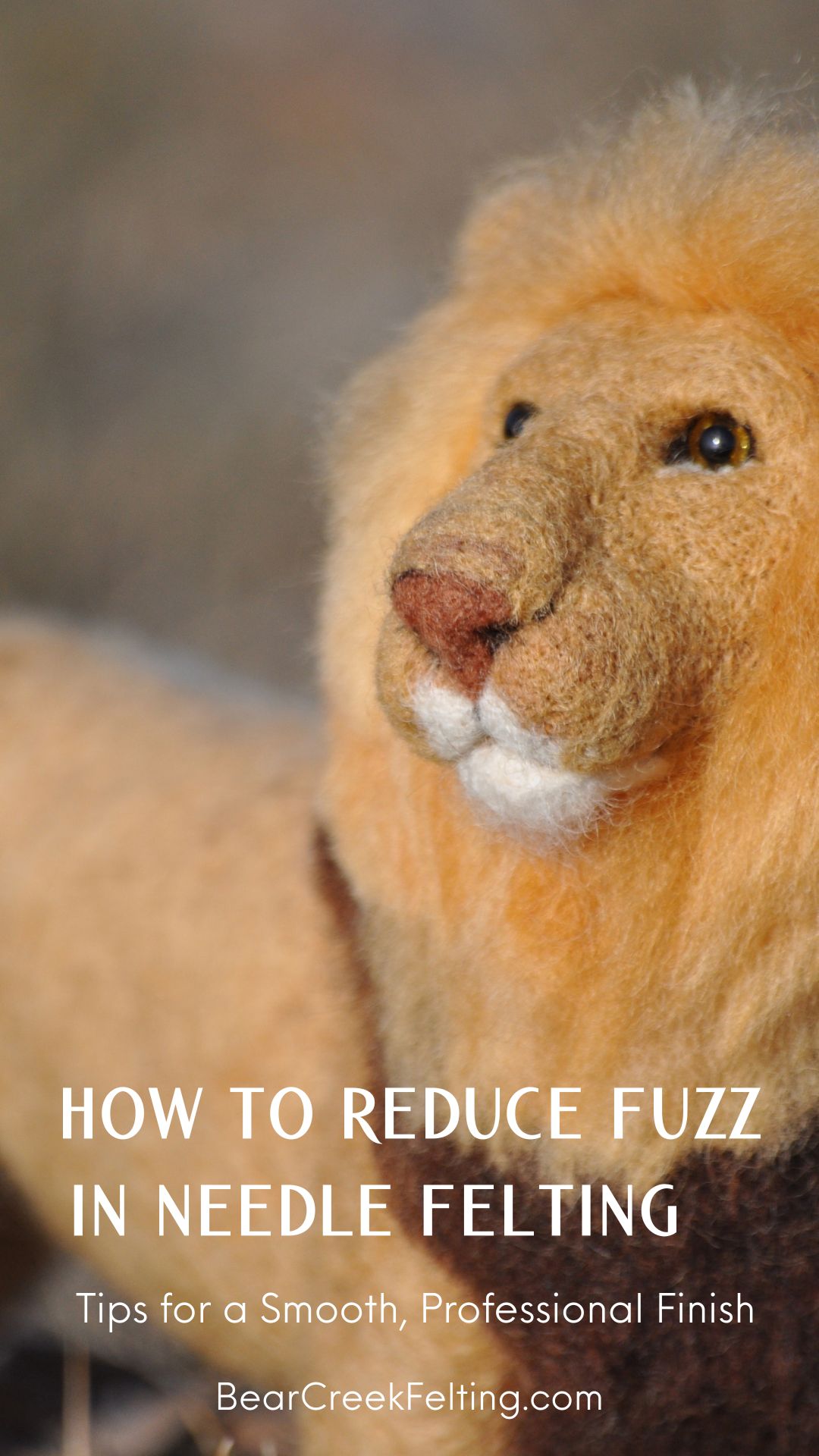 How to Reduce Fuzz in Needle Felting: Tips for a Smooth, Professional Finish
How to Reduce Fuzz in Needle Felting: Tips for a Smooth, Professional Finish
If you’ve ever wondered how to make your needle felted sculptures look smoother and less fuzzy, you’re not alone. One of the most common questions I hear from beginner needle felters is: “Why is my project so hairy?”
Stray fibers, surface fuzz, and that “woolly” look are all normal, especially when you’re starting out — but there are some simple steps you can take to create firmer, cleaner, and more professional-looking sculptures.
As the designer of the Bear Creek Needle Felting Kits, a wool grower, and instructor inside the Bear Creek Needle Felting Academy, I’ve spent years studying how different wools behave and how technique, needle choice, and persistence all play a role in reducing fuzz.
Let’s walk through the best ways to reduce fuzz and improve your needle felting finish.
1. Choose the Right Wool
Your wool choice is the most important factor when it comes to how smooth (or fuzzy) your project turns out.
Many felters are tempted to start with Merino wool because it’s so soft and luxurious — and while it is beautiful, its ultra-fine fibers are notoriously hard to felt in completely. Because the fibers are so thin, they tend to stay loose on the surface, no matter how much you poke.
That’s why I raise and process my own wool with felting in mind. Over the years, I’ve selectively bred my flock — crossing mostly Romney sheep with other breeds — to create a unique wool that felts quickly, cleanly, and with minimal fuzz. Our mill is located just a few miles from our farm in Fort Ransom, North Dakota, and is run by myself, my daughter, and my husband.





